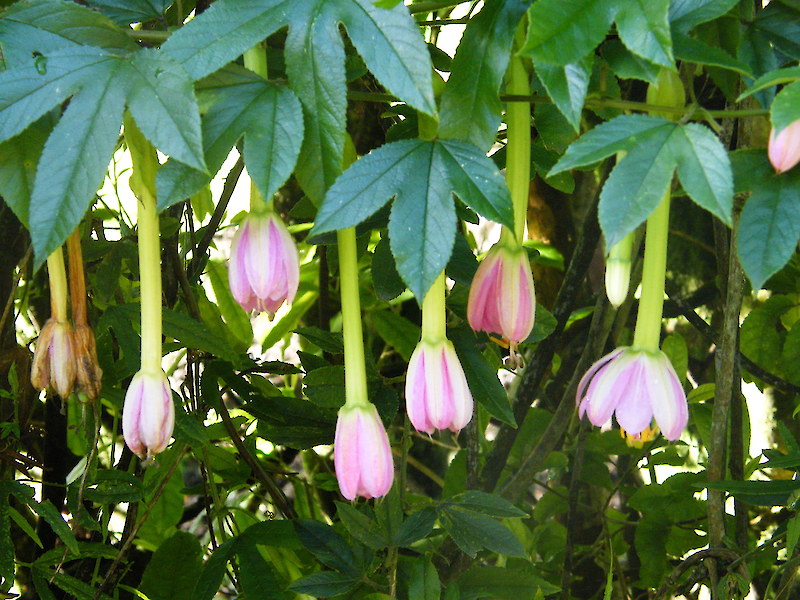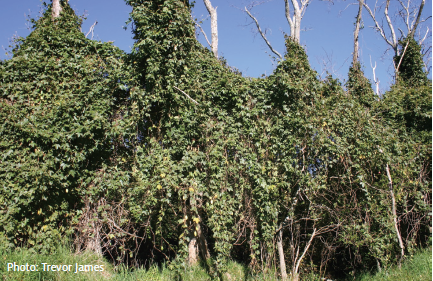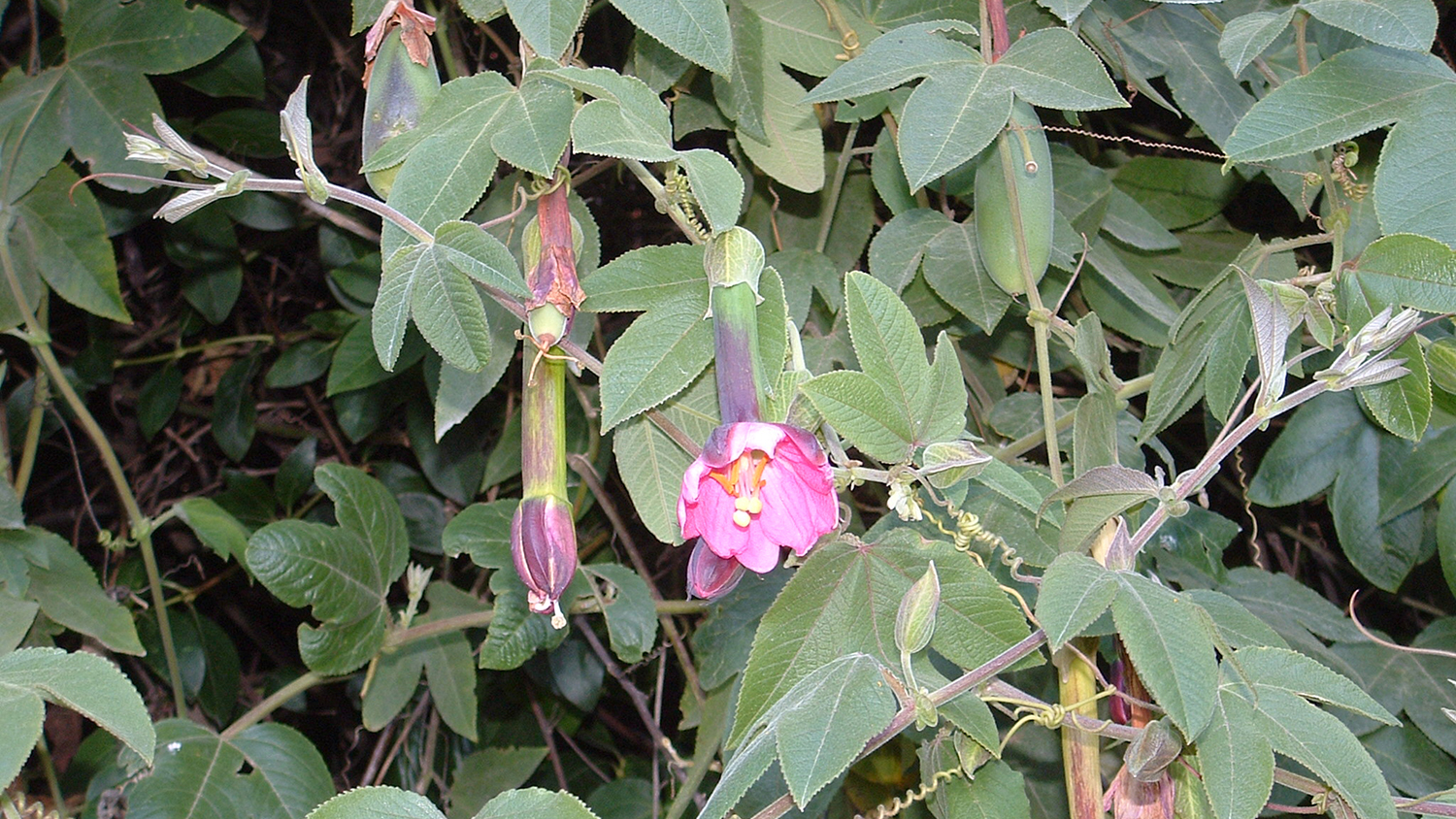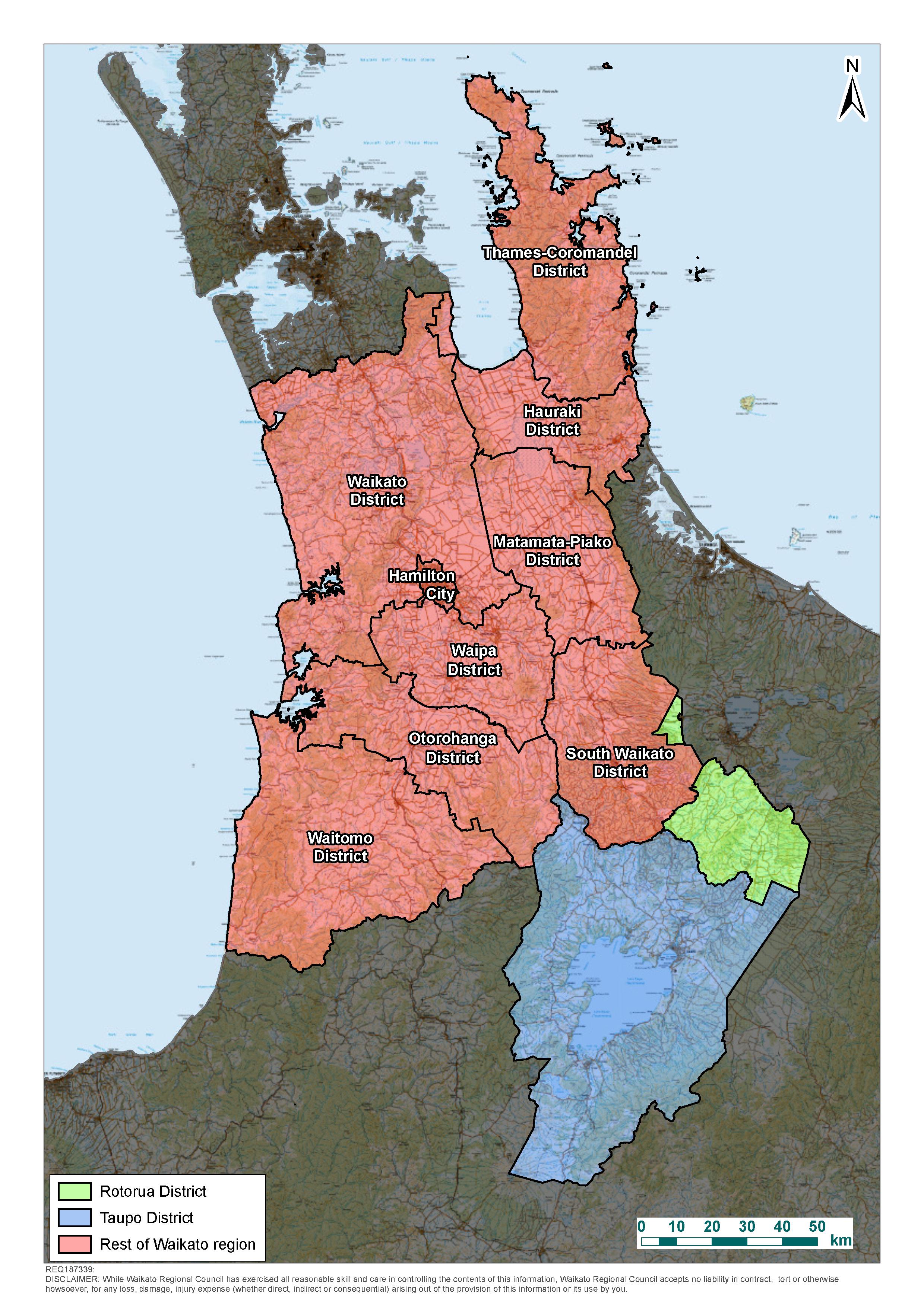| Management programme |
|
Progressive containment (Taupō and Rotorua districts within the Waikato region) Sustained control (excluding Taupō and Rotorua districts) |
| Objectives |
| Reduce the amount of banana passionfruit and the number of locations that have it within the Taupō and Rotorua districts and reduce its impacts on land elsewhere in the Waikato region. |
| Impacts |
| Biodiversity, social and cultural wellbeing, amenity/recreation |
Banana passionfruit, originally introduced to New Zealand as an ornamental plant, is native to South America. Preferring fertile soil, it grows in coastal areas, lowland and coastal shrublands and forest margins, light gaps, roadsides, open areas, farm and orchard hedges and domestic gardens.

What does it look like?
Banana passionfruit is a large, evergreen perennial vine with pink flowers. It can grow up to 10m high, maturing to fruit after only one year.
Flower
- Single, hanging, tubular flowers with pink petals (up to 7cm in diameter).
- Flower tubes (hypanthium) are 8cm-9.5cm long.
- Flowers throughout the year, from January to December.
Fruits/seeds
- Thin-skinned oval fruit up to 12cm long by 3cm across.
- Fruit is initially green, turning to yellow or orange-yellow when ripe.
- Has edible orange pulp and red-black seeds (about 4mm long).
Leaves/stems
- Three-lobed leaves are soft, downy and glossy green.
- Lobes are 5cm-14cm long (the middle lobe is the longest).
- Leaf stems are densely hairy.
Similar plants
Blue passion flower (Passiflora caerulea) has five-lobed leaves, and non-tubular whitish-purple flowers with purple filaments. Bat-wing passion flower (Passiflora apetala) has two-lobed leaves (that resemble a bat wing) and small yellow-green flowers (to 12mm) that develop into grape-sized black berries. These passionfruit species are also banned from sale, propagation, distribution or commercial display under the National Pest Plant Accord.

Why is it a pest?
Banana passionfruit is a vigorous, scrambling, smothering vine. It can grow in a wide range of habitats, including coastal areas, lowland and coastal scrub and shrublands and forest margins, along roadsides and in wastelands, and in farm and orchard hedges and domestic gardens. However, it prefers shrubland and forest margins with fertile soils.
It can blanket vegetation, out-competing other plants and preventing regeneration. It produces large, sweet fruit containing many seeds that are dispersed by birds, as well as possums, rats and feral pigs. Banana passionfruit is also spread by humans (via eating or discarding fruit and in garden waste).
While recent climate modelling suggests banana passionfruit could only occur in certain parts of the Taupō and Rotorua districts within the Waikato region, the impact of this pest may be significant in these areas. For this reason, Waikato Regional Council will undertake control of banana passionfruit on all private, rateable land within the Taupō and Rotorua districts in the Waikato region. In the rest of the region, where banana passionfruit may be more widespread, occupiers are responsible for its control within 50m of any shared boundary where the adjacent or nearby occupiers are undertaking control of it.
Control methods
More information
Advice
- For advice and additional information on control methods, call our pest plant staff on freephone 0800 800 401.
- Chemical company representatives, farm supply stores, garden centres or the Weedbusters website can also be good sources for advice.
Publications
The following publications are available for download or from Waikato Regional Council. Contact us to request a copy (freephone 0800 800 401).







To ask for help or report a problem, contact us
Tell us how we can improve the information on this page. (optional)